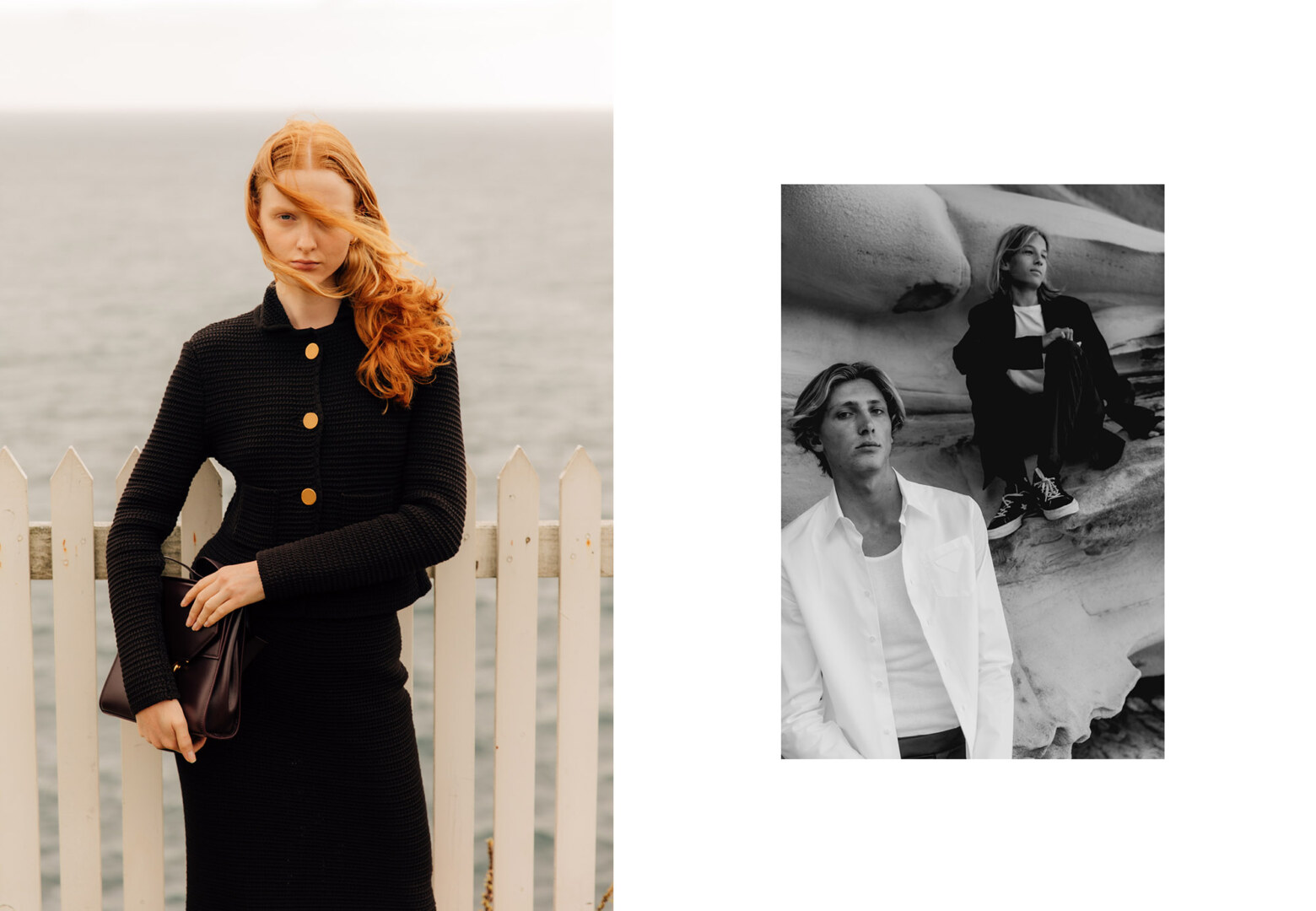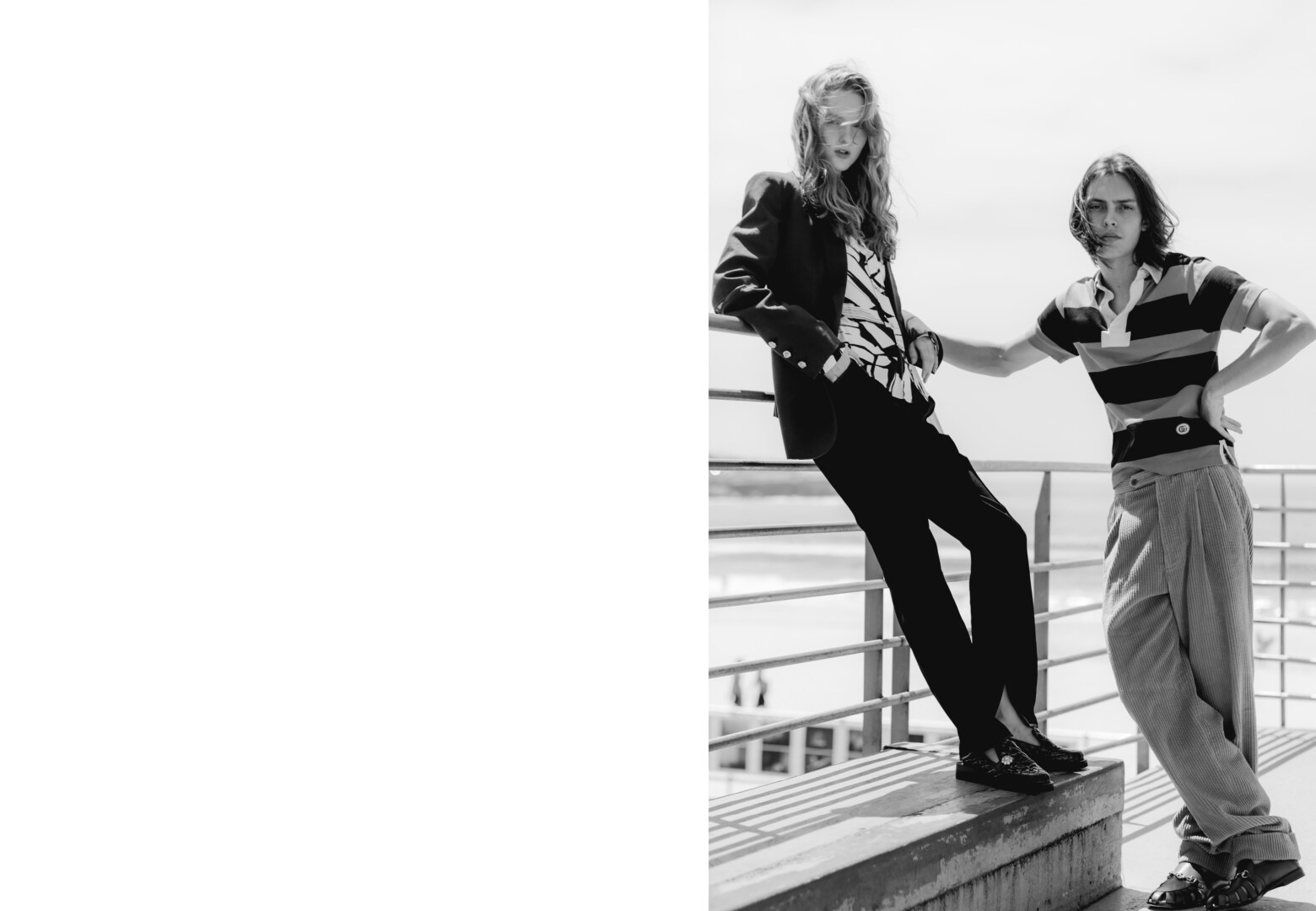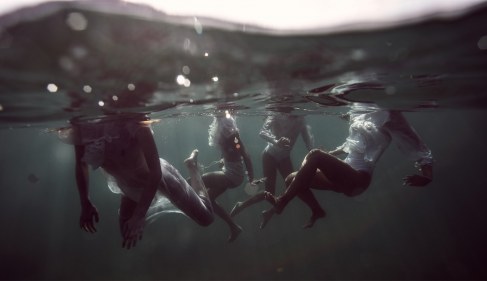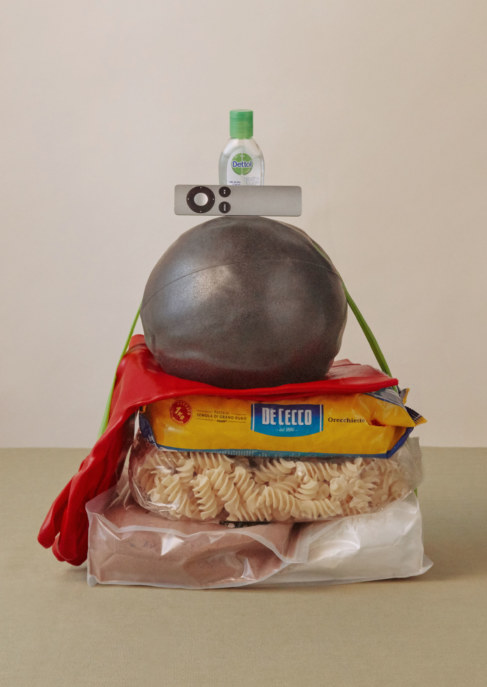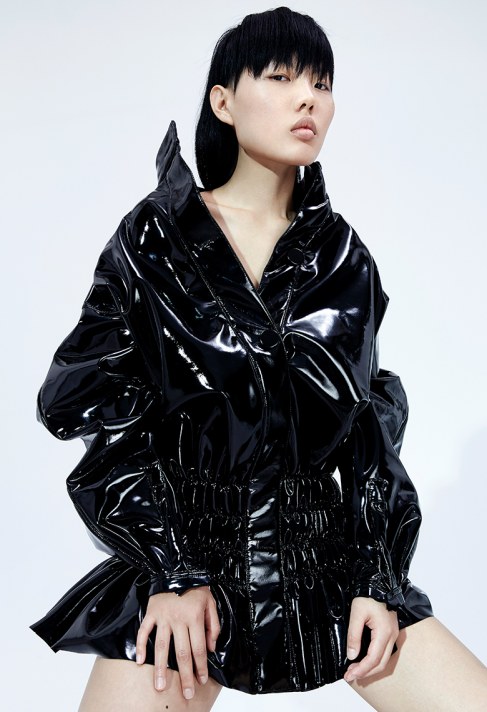JUST KIDS BY DAN ROBERTS AND HENRY COUSINS
PHOTOGRAPHER: Dan Roberts
STYLIST: Emma Kalfus
ART DIRECTION: Stephanie Huxley
MAKEUP ARTIST/GROOMING: Cherry Cheung
HAIR STYLIST: Stephanie HopaSTYLISTS ASSISTANT: Maggie Russel
DIRECTOR OF PHOTOGRAPHY: Henry Cousins
WRITTEN BY: Isabelle Truman
MODELS: Aiden @ Kult | Hanna @ Priscillas | Lochie @ Priscillas | Madi @ Kult | Mikka @ Kult | Nat @ Priscillas | Ollie Toussaint | Penny @ Kult | Samantha @ Priscillas| Vai @ Kult
Special thanks to Lawrence Pretty
Thanks to the internet, Generation Z is more socially and politically aware than any who came before them, spearheading activist movements and creating real, tangible change before they’re even able to vote. But when they were already being dealt an unfair hand, – managing Trump, a climate crisis and puberty all at the same time – the addition of a global pandemic would be almost comical, if it wasn’t so terrifying.
I remember vividly, 10 years ago, showing my younger sister an image of the Spice Girls. She replied deadpan, “They look cool… Have they all died now?” The moment marked the first time I realised the gravity of our decade age-gap: We might look eerily similar, and she may be walking the same school hallways I once did, but we grew up in two very different times: mine, the Spice Girls informing every item of clothing I bought for a three-year-period while I played snake on a Nokia 2280 and her, in a world consumed by technology, maturing alongside Instagram, iPhones and the Kardashians.
Over the past few years, Generation Z has started to make themselves known to the world. Led by Swedish teenager Greta Thunberg, they’ve told us that they’re not going to take the climate crisis – or the ruins we’ve left the planet in – lying down. They’ve begun using social media not in the self-obsessed dopamine boosting way millennials have long been addicted to, but to create real and lasting social and political change. Their impact so substantial that after hundreds of teenagers, guided by TikTok and K-Pop stans, trolled Donald Trump, pretending to buy tickets to his rally in Tulsa and resulting in him addressing an almost empty room, the US President tried to ban the platform from the country entirely.

From left Hannah wears Sandro leather jacket and pants | Vans shoes | Santa Cruz socks from The Iconic | Madi wears Bottega Veneta jacket, skirt and bag | Byfar slides | Aiden wears. Levi’s tee and jeans | Paul Smith belt | Mikka wears Wynn Hamlyn shirt, Stussy pants from The Iconic | Dior Men high tops | Lochie wears Bottega Veneta polo, Levi's jeans | Converse hightops

They drink and party less than millennials did at their age. In part, social media is responsible – both for its distraction methods and for the fact that Gen Z is avidly aware of how easily documented their lives are now, and, more to the point, how one drunken night out can be embedded into the realms of the internet forever. But thanks to the same technology, they’re far more educated than we were at the same age, too. In 2020, Instagram is being used to educate users on white supremacy and race relations, TikTok is being used to amplify important messages through viral dances and clickbait (searches for Charli D’Amelio, TikTok’s most popular user, often instead show videos calling for the arrest of the police who killed Breonna Taylor) and Twitch, a live streaming platform that’s resonating with Gen Z thanks to how unfiltered the content is, is platforming conversations with the likes of progressive politician, Alexandria Ocasio-Cortez, to millions. Gen Z sees themselves as part of a global community, fighting for social justice and having a real and immediate effect on the political scene before they can even vote.
They’re also a lot more woke than those who came before them. While Boomers and Gen X couldn’t get their heads around people not being attracted to the opposite sex and millennials are still getting the hang of exactly what every letter stands for in the acronym LGBTQI+, Gen Z doesn’t even need those words. They don’t want to be defined by traditional markers of identity or sexuality: it doesn’t matter who you want to date – if anyone – or what gender you define yourself as – if any.
But it’s not all sunshine, roses and pronouns. Gen Z reports levels of stress and depression that are higher than ever because of the economic and political state of the world they have inherited. “There’s an almost constant conversation going on between my friends about how we’re having to fix a world that’s ruined because of the actions of those who came before us,” my aforementioned younger sister, Ngahiwi, tells me over FaceTime from Auckland, New Zealand. “These conversations were happening long before the pandemic… now, it feels like all the progress we were making has been paused because there’s more urgent things to worry about.”

LEFT Lochie wears Bally suit | Wynn Hamlyn shirt | RM Williams belt | RIGHT Sam wears RM Williams jacket | Bonds singlet | Bassike pants | Penny wears Wynn Hamlyn shirt | Louis Vuitton pants

LEFT Hannah wears Miu MIu jumper, shirt and shorts | Vans shoes | Santa Cruz socks from The iconic | RIGHT Hannah wears Sandro jacket and pants | Gucci bag | Madi wears Bottega Veneta jacket and skirt
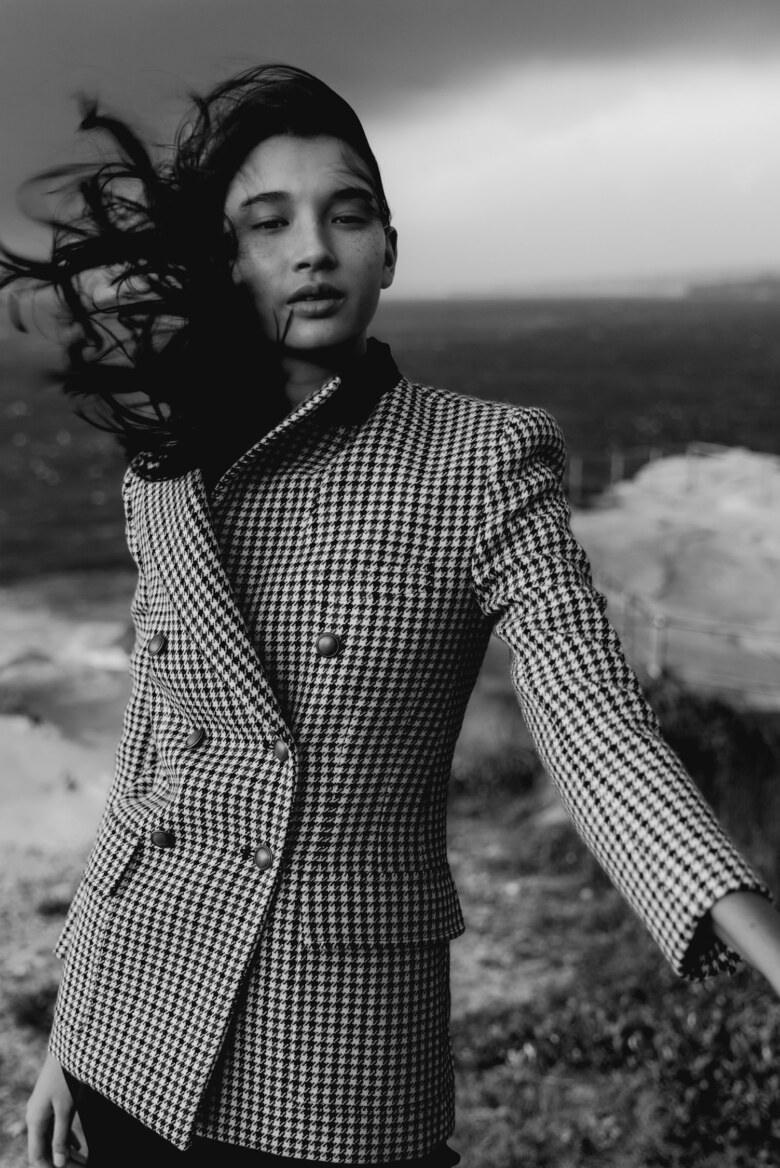
Penny wears Saint Laurent blazer and tights
Not only has the climate crisis been put on the back burner in 2020, much to the dismay of the thousands of – mostly teenage – powerhouses behind the movement that saw global marches across the world over the past two years, but the pandemic has shifted the way the world works in a myriad of ways. It didn’t just coincide with – and amplify – a global race reckoning, leading to the demise of countless brands and companies, but it completely altered the way we interact both personally and professionally. Just like it feels a bit… gross to think of yourself dancing in a loud, dark club surrounded by hundreds of sweaty bodies, so too does the thought of dragging yourself out of bed in the pitchblack to stand on a packed tube just to get to an office, where you’ll do the same thing you could’ve done from the comfort of your own home – sans hour-long commute.
The amount of freelancers, flexible working structures and people forging their own paths career-wise has been growing rapidly over the past few years, but with global lockdowns forcing people to readjust to working from their living rooms and the economic crisis pushing millions out of jobs, the result is a once-in-a-generation opportunity to reimagine everything about the way work is structured, when, and if, society should return to normal.
It’s not just employees that are keen to keep the WFH freedom and lack of 2pm meetings that could’ve been emails that COVID has afforded. Many employers, who are open-minded enough to look past the rituals of 9-to-5, office-based work, are looking to experiment with ‘hybrid’ structures, implementing a model that combines remote work and office time. But while it’s tempting to take the sleep ins over commutes without a second thought, changing these structures requires questioning what impact they’ll have to a larger degree: how will this affect gender equality and workplace diversity? What will it mean for mental health if people lose the connection that in-office work can provide? And, if we’re all expected to work from home, what impact will that have on domestic abuse and family dynamics? If we’re moving even more digital, how will this impact those on the lower end of the economic scale?
Thankfully, we have Generation Z – the ones who seem to question the way that everything is done in search of a better alternative – to help charter our course. Though perhaps the future will look even more different to what they’d expected, with more hurdles now than anyone could’ve predicted, given their boundary-pushing, society-questioning nature, it’s likely they would have nudged us in a similar direction eventually, even if they weren’t prompted by a pandemic.

LEFT Aiden wears Bally jacket | Gucci polo shirt (worn underneath) | Levi's 501 | RM Williams belt | Mikka wears Louis Vuitton jacket | Jac and Jack tee (worn underneath) | Stussy pants from The Iconic | RIGHT Vai wears Ganni vest and skirt | Dr Martens boots

Sam wears Ganni vest and blazer | Matin trousers | RIGHT Aiden wears Jac and Jack singlet | Bassike pants | Gucci shoes
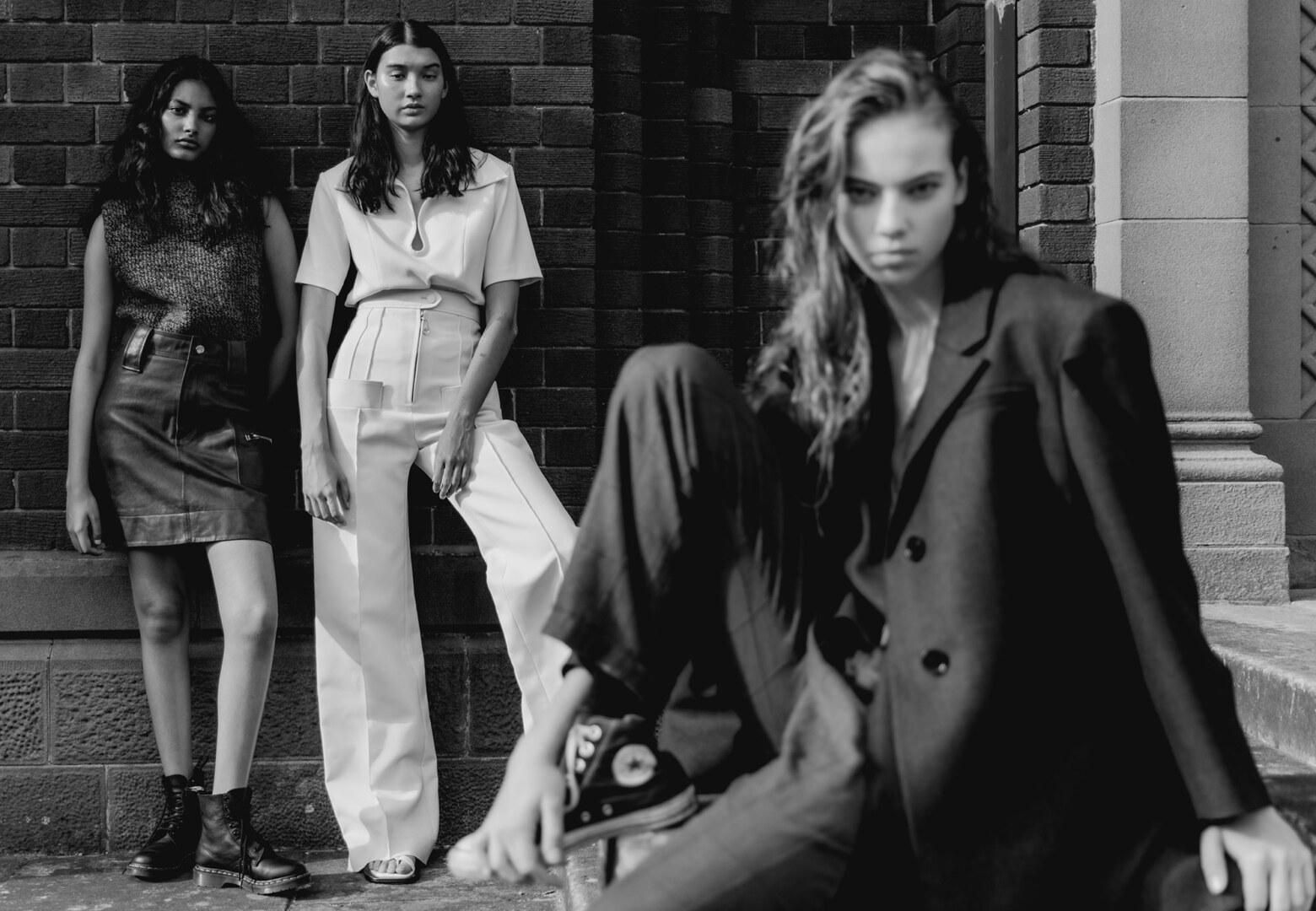
Vai wears Ganni sleeveless knit and skirt | Dr Martens boots | Penny wears Wynn Hamlyn top | Louis Vuitton pants | A Emery sandals | Sam wears Ganni vest and blazer | Matin trousers | Converse shoes
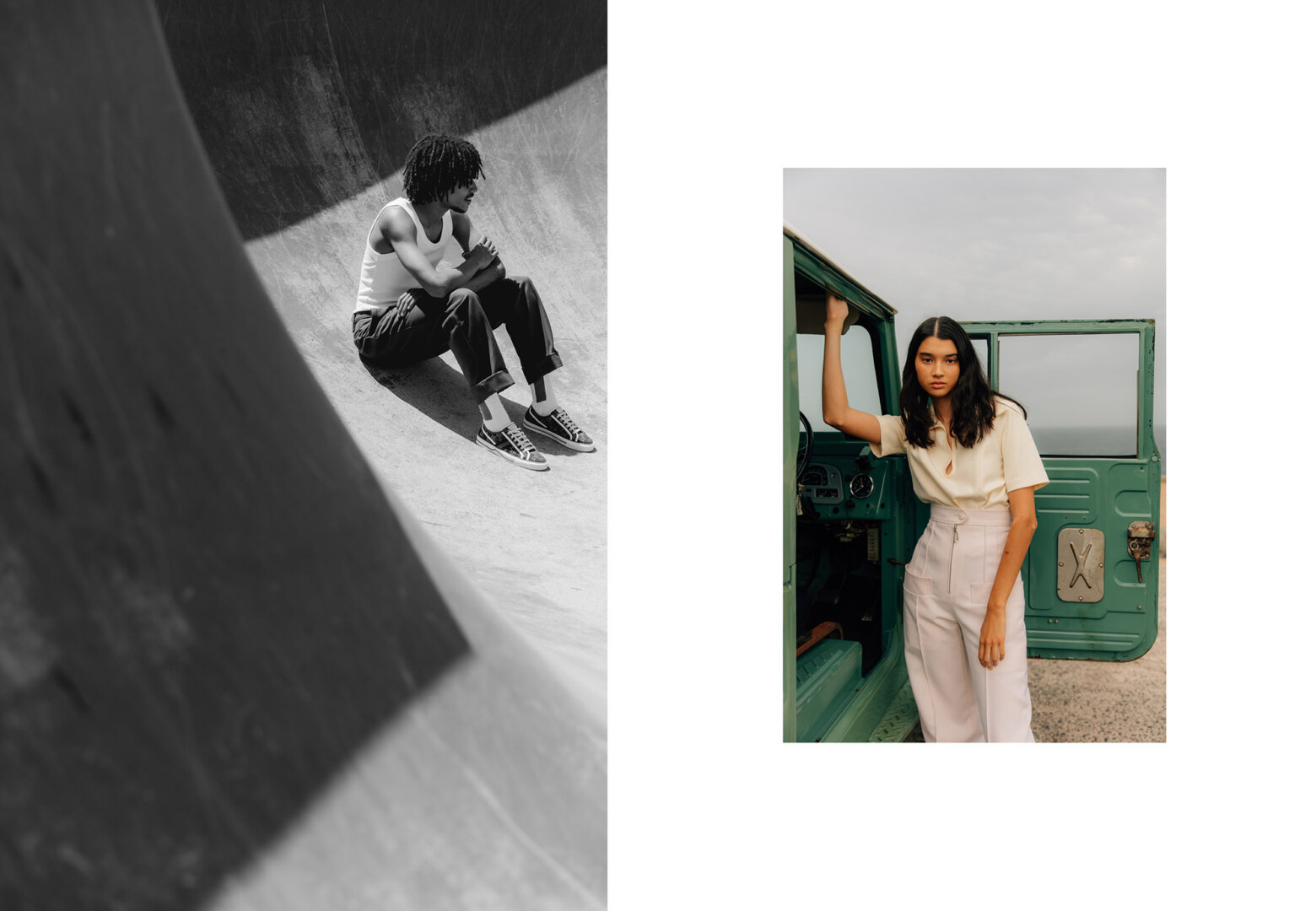
LEFT Aiden wears Jac and Jack singlet | Bassike pants | Gucci shoes | Nudie Jeans socks | RIGHT Penny wears Wynn Hamlyn shirt | Louis Vuitton pants
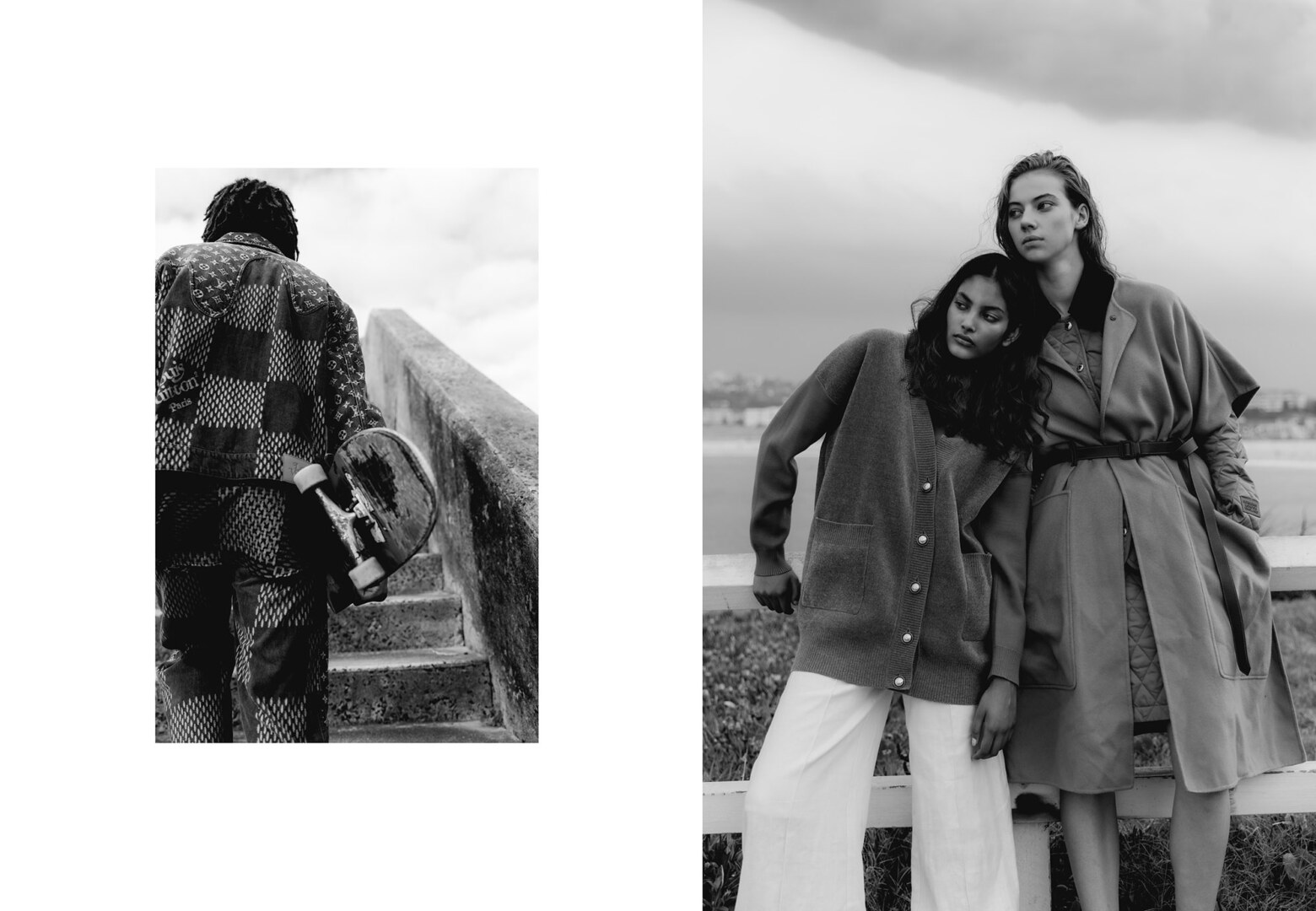
LEFT Aiden wears Louis Vuitton shirt, jacket and jeans | RIGHT Vai wears Claudie Pierlot cardigan | Friends With Frank pants | Sam wears Burberry top, skirt, trench and belt
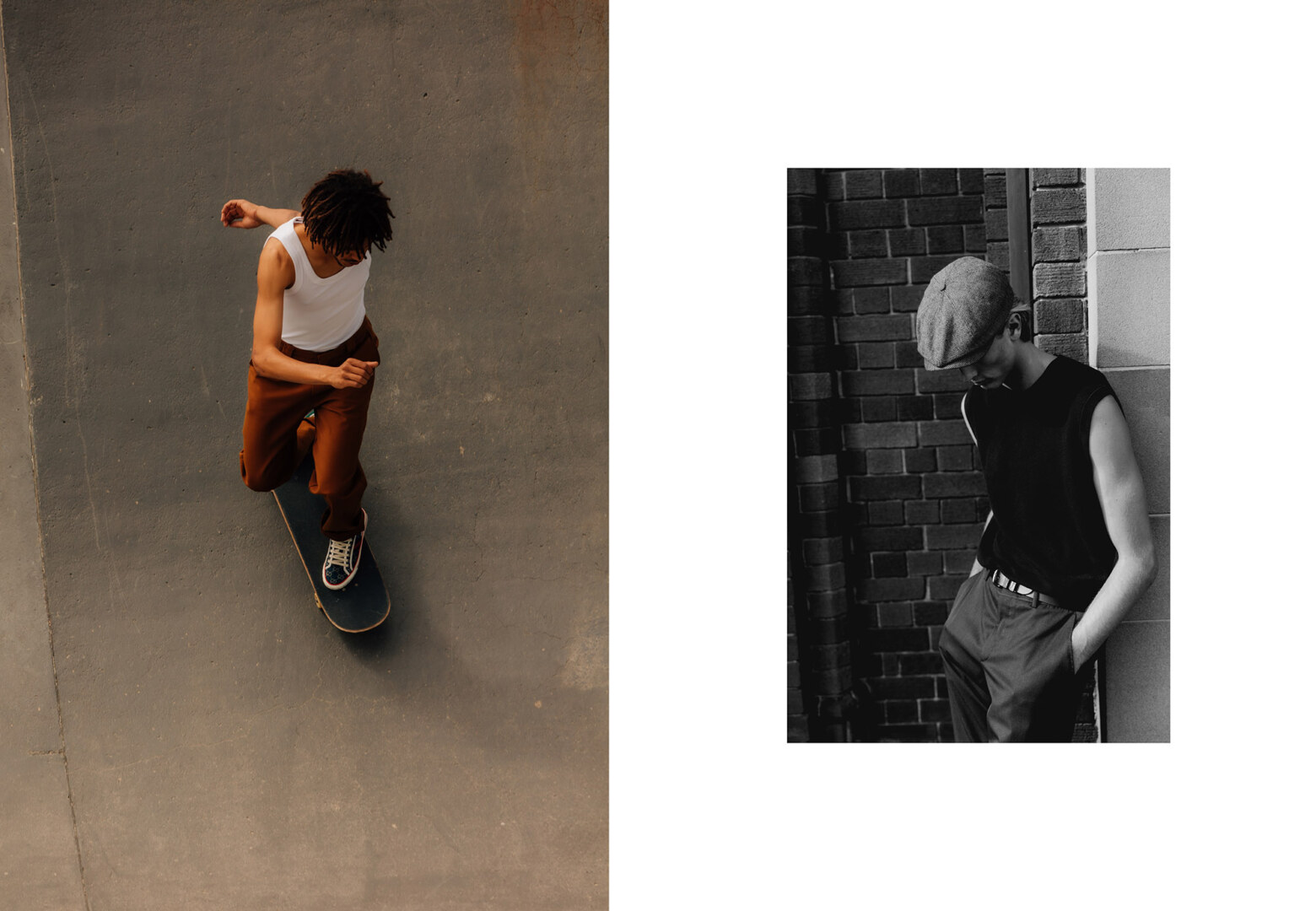
LEFT Aiden wears Jac and Jack singlet | Bassike pants | Gucci shoes | RIGHT Nat wears Uniqlo vest | PJohnsen trousers | Brixton piece cap from The Iconic | Paul Smith belt
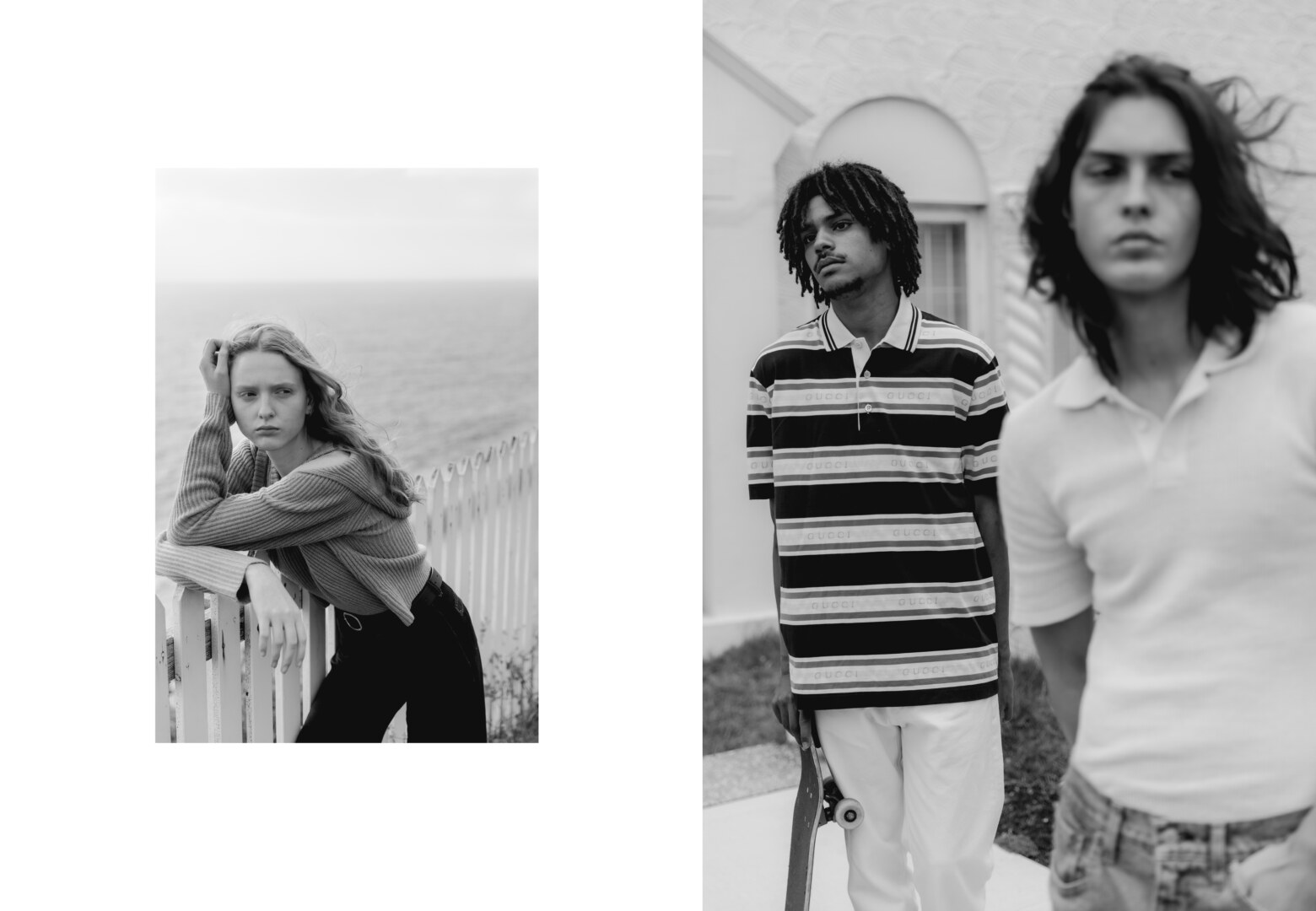
[LEFT] Madi wears Wynn Hamlyn knit | Gucci jeans | Iro belt | [RIGHT] Aiden wears Gucci polo shirt | Levi's 501 Lochie wears Bottega Veneta top | Levi's jeans



